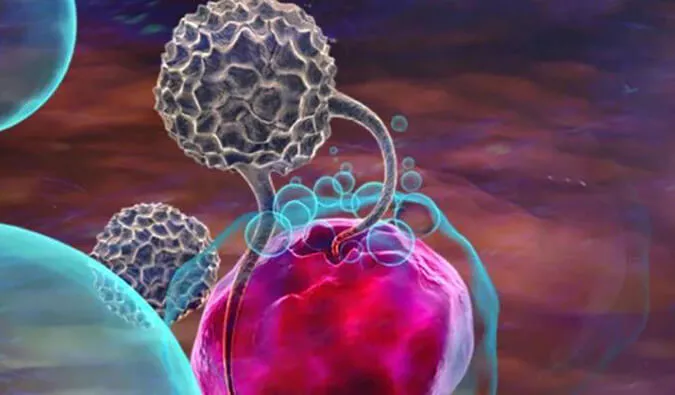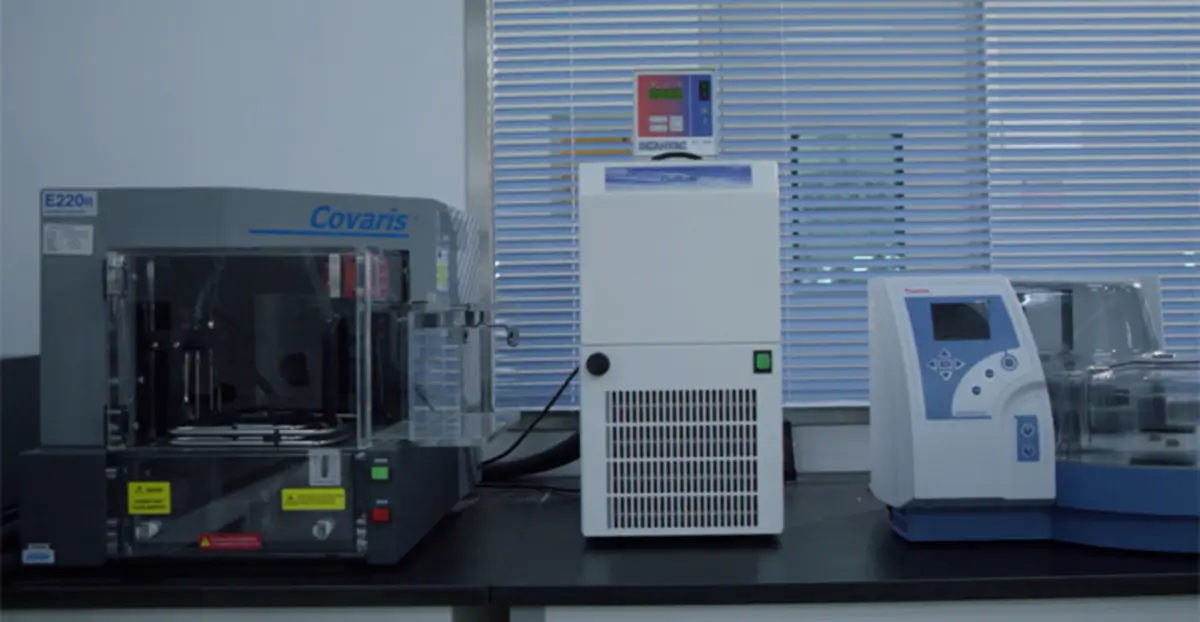- Cellular immunotherapy has developed by leaps and bounds in recent years, providing a cure for many difficult-to-treat cancers.
Medicilon has built a one-stop platform for preclinical R&D of cellular immunotherapies, covering a variety of methods including CAR-T, TCR-T and CAR-NK. Using a wealth of animal models and a variety of advanced analysis techniques, Medicilon has completed numerous pre-clinical projects for clients worldwide.
 Introduction to the Test Product
Introduction to the Test Product- Category:CAR-T CellTCR-T CellCAR-NK CellDNT CellTIL Cell
- The complexity of Immune Cells:Proliferation in vivoIndividualization and heterogeneityLimited batches and productionComplicated preparation processRaw materials with huge variationsComplex biological efficacy and safety evaluation
 Pharmacology and Pharmacodynamics of Cell & Gene Therapy Drugs
Pharmacology and Pharmacodynamics of Cell & Gene Therapy Drugs- Safety PharmacologyPotential undesired effects of the study drug on physiological function at doses within or above the therapeutic rangeGenerally include effects on the central nervous system, cardiovascular system, and respiratory systemEffects on other organ systems may need to be assessed depending on product characteristics
- In vitro Pharmacodynamic StudiesEfficacy testing of cell therapy (such as CAR-T):Tumor killing rate or proliferation inhibition rateIFN-γ expression levelPhenotype changes of CAR-T cellsPreparation and Evaluation of CAR-T
 Plasmid Vector ConstructionThe PD-1 shRNA was integrated into the CAR plasmid, and then transduced into T cells by a lentiviral vector to obtain CAR-T cells with PD-1 silencing function. The results showed that effective silencing of PD-1 significantly suppressed the immunosuppressive effect of the tumor microenvironment and prolonged the activation time of CAR-T cells, resulting in a longer tumor killing effect. PD-1-silenced CAR-T cells significantly prolong the survival of mice with subcutaneous prostate and leukemia xenografts. This demonstrated that PD-1 silencing technology is a suitable solution to promote the therapeutic effect of CAR-T cells on subcutaneous prostate and leukemia xenografts[1]. The plasmid sequencing work in this experiment was completed by Medicilon.
Plasmid Vector ConstructionThe PD-1 shRNA was integrated into the CAR plasmid, and then transduced into T cells by a lentiviral vector to obtain CAR-T cells with PD-1 silencing function. The results showed that effective silencing of PD-1 significantly suppressed the immunosuppressive effect of the tumor microenvironment and prolonged the activation time of CAR-T cells, resulting in a longer tumor killing effect. PD-1-silenced CAR-T cells significantly prolong the survival of mice with subcutaneous prostate and leukemia xenografts. This demonstrated that PD-1 silencing technology is a suitable solution to promote the therapeutic effect of CAR-T cells on subcutaneous prostate and leukemia xenografts[1]. The plasmid sequencing work in this experiment was completed by Medicilon. CAR-T Cell Killing Assay
CAR-T Cell Killing Assay Experiments assessing CAR-T cell-mediated killing, show that CAR-T-dependent killing is increased significantly compared with Mock-T cells
Experiments assessing CAR-T cell-mediated killing, show that CAR-T-dependent killing is increased significantly compared with Mock-T cells - In vivo Pharmacodynamic StudiesCell Therapy Test SubstancesCan be prepared from blood donated by healthy volunteers Some proof-of-concept studies could be done with alternative products of animal origin The similarities and differences between non-clinical test substances and clinical samples should be detailed in new drug applicationsGene Therapy Test SubstanceConsider factors such as production process, key quality characteristics (such as titer), preparations for clinical use The activity of the test substance in non-clinical research should be evaluated to investigate If there is species specificity, If the vector uses an expression tag, the impact of the tag on the supportability of non-clinical trials should be analyzedDetection Methods and Evaluation IndicatorsBioluminescent Imaging (BLI) Flow Cytometry: Detecting the number of tumor cells in animals Flow Cytometry, ELISA, MSD: Changes in tumor-related cytokinesRelated Parameters: Tumor volume, tumor weight, tumor cell colonization site in animals and median survival period of animalsModel Resources:Homologous Mouse ModelTransgenic Mouse ModelTransplanted Tumor Mouse Model


 The picture shows the pharmacodynamic study of dual-target CAR-T cells in K 562 subcutaneously transplanted tumor mouse modelHumanized Mouse Model of Immune System Reconstruction
The picture shows the pharmacodynamic study of dual-target CAR-T cells in K 562 subcutaneously transplanted tumor mouse modelHumanized Mouse Model of Immune System Reconstruction
 △The figure shows the pharmacodynamic study of the mouse pharmacodynamic model of hPBMC immune system reconstruction induced by Raji-luc fluorescein-labeled lymphoma cellsBispecific CAR-T Efficacy Research: CD19/BCMA
△The figure shows the pharmacodynamic study of the mouse pharmacodynamic model of hPBMC immune system reconstruction induced by Raji-luc fluorescein-labeled lymphoma cellsBispecific CAR-T Efficacy Research: CD19/BCMA CAR-T cell killing experiments show that CAR-T cell-dependent killing is increased compared with Mock-T cells
CAR-T cell killing experiments show that CAR-T cell-dependent killing is increased compared with Mock-T cells
 Pharmacokinetic Study of Cell & Gene Therapy Drugs
Pharmacokinetic Study of Cell & Gene Therapy Drugs- Points to Consider for Pharmacokinetic Studies:The pharmacokinetc research studies sample in vivo behaviors, such as distribution, proliferation and survival time. We also track transgenic product expressed and secreted outside of the immune cells to assess its local and/or systemic exposure characteristics.Exposure: Gene therapy products should be analyzed and evaluated according to the specific characteristics of the product considering the actual exposure in non-clinical researchBiodistribution: Biodistribution of gene therapy products refers to the distribution, persistence and clearance of gene therapy products in target and non-target tissues in vivoShedding: Shedding assays should include testing for infectivity of excreted components
- Pharmacokinetic (Biodistribution) Detection Technology:Imaging TechnologyFlow CytometryImmunohistochemical TechniqueQuantitative PCR TechnologyddPCRELISPotDistribution of Lung Cell Therapy
 The data obtained by qPCR and flow cytometry are consistent
The data obtained by qPCR and flow cytometry are consistent
 Nonclinical Safety Evaluation of Cell & Gene Therapy Drugs
Nonclinical Safety Evaluation of Cell & Gene Therapy Drugs - In toxicology research, a comprehensive safety analysis and evaluation of gene therapy products should be conducted, and the safety of the expression products of introduced genes should also be evaluated if necessary. Gene therapy products should be effectively introduced/exposed in relevant animal species.The non-clinical safety risks of cell therapy (such as CAR-T cells) mainly include:Cytokine release syndrome (CRS)Graft-versus-host disease (GVHD)Reversible neurotoxicityReduction of B cellsOn-target/off-tumorTumorigenicity/tumorigenicityModel Resources:Homologous Mouse ModelsTransgenic Mouse ModelsTransplanted Tumor Mouse ModelsNon-Tumor-Bearing Immunodeficiency Mouse ModelsHIS Mouse ModelVarious methods of administration such as intravenous injection, intratumoral injection, and joint cavity injection are available.Content of drug safety evaluation:Single Dose Toxicity TestingRepeated Dose Toxicity TestImmunogenicity / ImmunotoxicityIn vitro Soft Agar Clone Growth TestIn vivo Tumorigenicity / TumorigenicityFormulation SafetyOther: Express Product SafetyReference:
[1] Jing-E Zhou, et al. ShRNA-mediated silencing of PD-1 augments the efficacy of chimeric antigen receptor T cells on subcutaneous prostate and leukemia xenograft. Biomed Pharmacother. 2021 May;137:111339. doi: 10.1016/j.biopha.2021.111339.
 Service Cases
Service Cases




 marketing@medicilon.com
marketing@medicilon.com




















